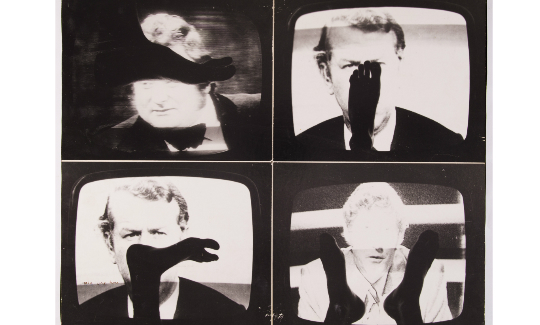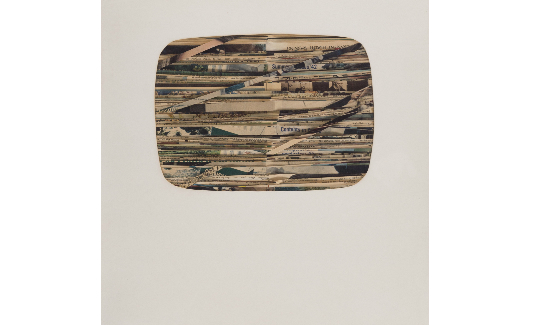In 2003, the Haifa Museum of Art held the exhibition "Video Zero: Communication Interferences: The Projected Image – The First Decade." This exhibition sought to address the lack of philosophical and critical discussion of the medium of video art in the Israeli art scene. The exhibition focused on the medium's early days, beginning in the 1960s during the cultural revolutions that sought to challenge the hegemony of the establishment. The exhibition's curator Ilana Tenenbaum noted in the catalogue that, as part of this critical approach, and driven by the same utopian impulse, "Many artists searched for new forms and a new definition of their artistic practice that would place it in opposition to the formative power of mass media in Western culture."
Before the internet conquered the world, television fulfilled an important social function, serving as a main source of information and entertainment and providing hours of idle enjoyment. Television, which was first envisioned as a means of interpersonal communication, was appropriated early on by governmental and commercial factors who understood the huge potential of a captive audience. These players decided to invest capital in the development and control of broadcasting technologies.
In this context Tenenbaum notes that the institutionalization of the electronic medium of television, as a commercial product controlled by monopolies, "led to the creation of uniform styles and agreed cultural-political codes in American and European programming. Instead of becoming a tool of communication, as it aspired to be, television thus became a hegemonic institution and a one-way marketing tool." Video art is directly and closely related to television. Many artists have addressed it as an object, as subject matter, or as a medium in their works.
The works presented here were selected from the "Video Zero" exhibition. They reveal a critical stance vis-à-vis television and its ambition to present “live” reality, when in fact producers stage and edit this reality according to the wishes of the corporate powers that dominate the medium. This medium is today subordinated to the same economic and political interests that controlled it tightly for five decades.
Text: Anat Martkovich



